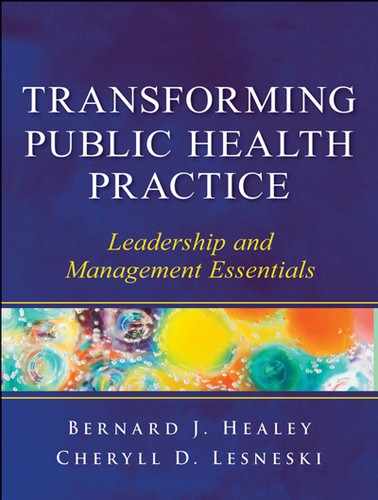Case Study 3
Formation of Community Partnerships to Prepare for H1N1
During influenza pandemics the medical community and the general public need up-to-date information. This information must be easy to understand and readily available for large numbers of people if the pandemic occurs. The time to prepare the information is long before the outbreak of disease so that individuals will know what to do if and when public health authorities begin to report the disease. This type of information development and distribution works best if several agencies work together on the project because collaboration often yields more ideas and available resources.
The IOM (2002) has argued that the use of information technology in the improvement of the health of communities presents great opportunities and challenges. This prestigious group recommends that public health agencies should use information technology to collect and disseminate information more efficiently in order to help the public and public officials better understand what health services should be offered. This would include conveying to a large number of people the advantages of using preventive services for circumventing or postponing the development of chronic diseases and their complications. According to Novick et al. (2008), information management systems have evolved as some of the most important tools available to public health departments because of the sheer volume of health data available and the emergence of technology to swiftly disseminate these data.
According to Herzlinger (2007), approximately ninety-five million Americans use the Internet to retrieve health care information, and six million use the Web on a daily basis to learn about health problems. Employing this type of technology is definitely one way to better educate the consumer about the dangers of high-risk health behaviors. The nice part about this kind of intervention is that it is an inexpensive way to make accurate health information available to many.
Due to the availability of computing technology, public health departments are now able to rapidly gather health-related data, analyze these data, and share them with those responsible for the improvement of the health of the population (Novick et al., 2008). The future holds great promise for the further development of information technology to be used in delivering public health information to larger audiences. Information delivered by public health departments, especially at the local level, should include notices pertaining to education programs to prevent diseases and their complications, notifications about other preventive services, and data concerning quality of care issues. Also necessary to improve health outcomes is a partnership with patients, which should involve sharing medical information with them and helping each patient to understand the relevance of that information to the quality of his or her life and the lives of family members. Information sharing can help patients implement their own prevention strategies in order to avoid chronic diseases and their complications.
Health education and health promotion programs are capable of reducing the incidence of epidemics of communicable diseases like influenza. According to the Centers for Disease Control and Prevention (CDC, 2009g), health risk communication strategies are very important in the protection of the population in the event of an influenza pandemic. Community partnerships can be used to develop health communication programs for rapidly sharing vital information to large segments of the population. Vaughan and Tinker (2009) point out that health communication programs can help the public become an effective partner by encouraging them to instigate prevention activities and enabling them to respond to the changing nature of a communicable disease pandemic.
The attempt to develop a proactive approach for dealing with the almost certain epidemic of H1N1 influenza began in August 2009 at King's College in Wilkes-Barre, Pennsylvania. The director of the Health Care Administration Program was an epidemiologist for the Pennsylvania Department of Health for twenty-five years before assuming his current position at the college. The director recognized the need for collaboration in rapidly developing an education initiative designed to answer the public's questions about the potential epidemic of influenza throughout the country in fall 2009. A second purpose of the program was to help employers in the community prepare for the H1N1 pandemic. This included educating employers on how the disease is contracted and how long an employee can be contagious, offering recommendations for sick leave policies, suggesting proactive measures to reduce the spread of infection, and so on.
As already mentioned, one way in which information can be shared quickly with large segments of the population is through the use of the Internet. Community agencies, especially at the local level, can deliver online information that includes virtual preventive services and education programs to prevent diseases and their complications. One such program was developed through a partnership that involved the American Red Cross, a city health department, and a graduate program in health care administration at King's College. This program was in the form of a voice-narrated PowerPoint presentation about how to prevent infection with H1N1. This presentation also included a short pretest and was followed by a posttest to determine the effectiveness of this program. The program was launched on the Health Care Administration Program's Web site and was made available to all partner agencies.
Community partnerships can be used to obtain additional human and material resources necessary to combat population-based health problems, as was the case with efforts to prepare for H1N1. Rashid et al. (2009) argue that when agencies collaborate in their work on health problems there is a greater chance for the development of improved solutions and effective interventions that can then be shared with other agencies.
1. Explain how community partnerships can be used to share information about chronic diseases with large segments of the population.
2. Can you think of other forms of technology that will be useful in the education of large segments of the population about the prevention of disease?
3. How can virtual health education programs be marketed to the general public?
